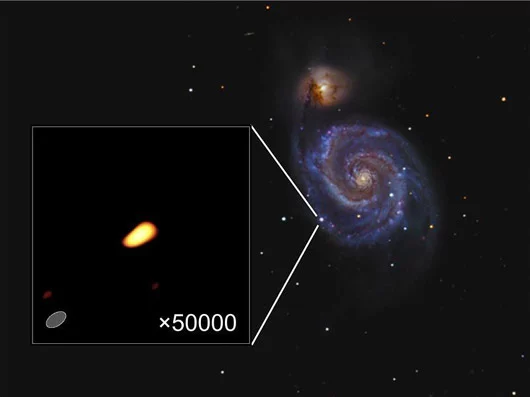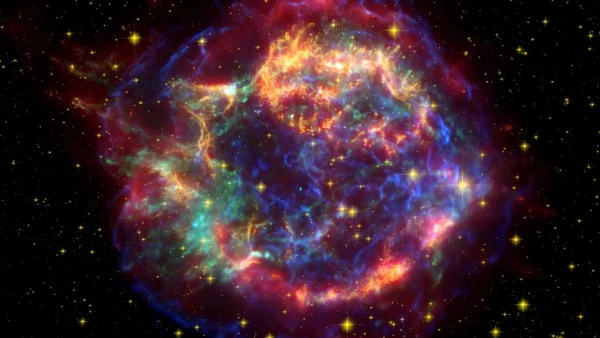Only 14 days after the explosion, the first image of a supernova in the Whirlpool Galaxy (M51) was captured, marking a milestone in the study of rare astronomical phenomena. This is a significant event, not only because it provides an opportunity to observe the death of a star but also because of the remarkable precision and detail of the recorded images.

According to information from AlphaGalileo.org, a team of scientists from Spain, Sweden, Germany, and Finland collaborated with NASA and the Yebes National Geographic Institute to collect data using state-of-the-art telescopes. All this data was processed by a supercomputer in the Netherlands, allowing the reconstruction of high-resolution images. “The results enable us to see a golf ball on the surface of the moon,” the scientists reported.
What makes this study unique is how telescopes across Europe operated as a single instrument, representing a groundbreaking leap in the ability to observe the universe. For the first time, scientists were able to capture detailed images of a supernova immediately after it occurred, providing critical insights into the speed and spread of shockwaves from the explosion.
“This image is not just a testament to advanced technology but also helps us better understand the mechanisms of stellar death,” shared Iván Martí, a researcher at the Max Planck Institute for Radio Astronomy in Germany.
Supernovae occur when a massive star reaches the end of its life cycle and explodes, releasing an enormous amount of energy into space. This event not only creates heavy elements like gold and iron but also plays a crucial role in distributing matter and energy, shaping the universe we live in.
The study, conducted by the University of Valencia and the Andalusian Institute of Astrophysics, will be published in the journal Astronomy & Astrophysics. These findings are expected to lay the groundwork for future observations, not only in the study of supernovae but also in exploring the structure and evolution of galaxies.

The research team is currently monitoring similar explosions to gain deeper insights into the role of supernovae in the evolution of the universe. This journey reflects not only technological progress but also the spirit of global collaboration in uncovering the mysteries of space.


HPX24h > Space > The Youngest Recorded Supernova: Unveiling the Mystery of a Star’s Death
Top Reads from This Category
Space
Could Our Universe Have Collided With Another Universe Billions of Years Ago?
Space
The Smallest Star System with Three Exoplanets Found by NASA’s Kepler
Space
Three Earth-Like Planets That Could Support Life: New Discovery from NASA
Space
3D Lunar Map: A New Gateway to Understanding the Universe
Space
18 New Planets: Unlocking the Gateway to Exploring Giant Star Systems
Space
Over 100 Billion Planets in the Milky Way: Astonishing Discoveries About the Universe
Space
Exploring Saturn’s Moon Phoebe: Planet-Like Features and Characteristics
Discover New Topics
Health
Fruits That Can Spike Blood Sugar Levels: Be Cautious
Health
Exploring How Microplastics Enter the Body and Affect Health
Science
Artificial Intelligence Outperforms Humans in Treating Depression
Fitness
hould You Do Cardio or Lift Weights to Burn Calories More Effectively
Fitness
Post-Workout Muscle Soreness: Tips to Relieve Pain and Stay Motivated in Your Fitness Journey
Parenting Tips
Why Your Child Might Be Coughing Disruptively During Sleep?
Science
China’s Hypersonic Jumbo Jet Could Cut Beijing to New York Flight Time to Just 2 Hours
Healthy Eating
Understanding the Important Role of Carbohydrates in Health
Fitness
More Flexible – The Secret to Longevity?
Science
Turning Dreams On and Off with Brain-Control Technology: A Breakthrough in Sleep Researc
Fitness
Safe Exercises for Early Pregnancy: Tips to Keep Moms Healthy and Strong
Science
Innate Intelligence: What Role Do Genetics Play in Developing High IQ
Parenting Tips
How Much Sleep Do Children Really Need?